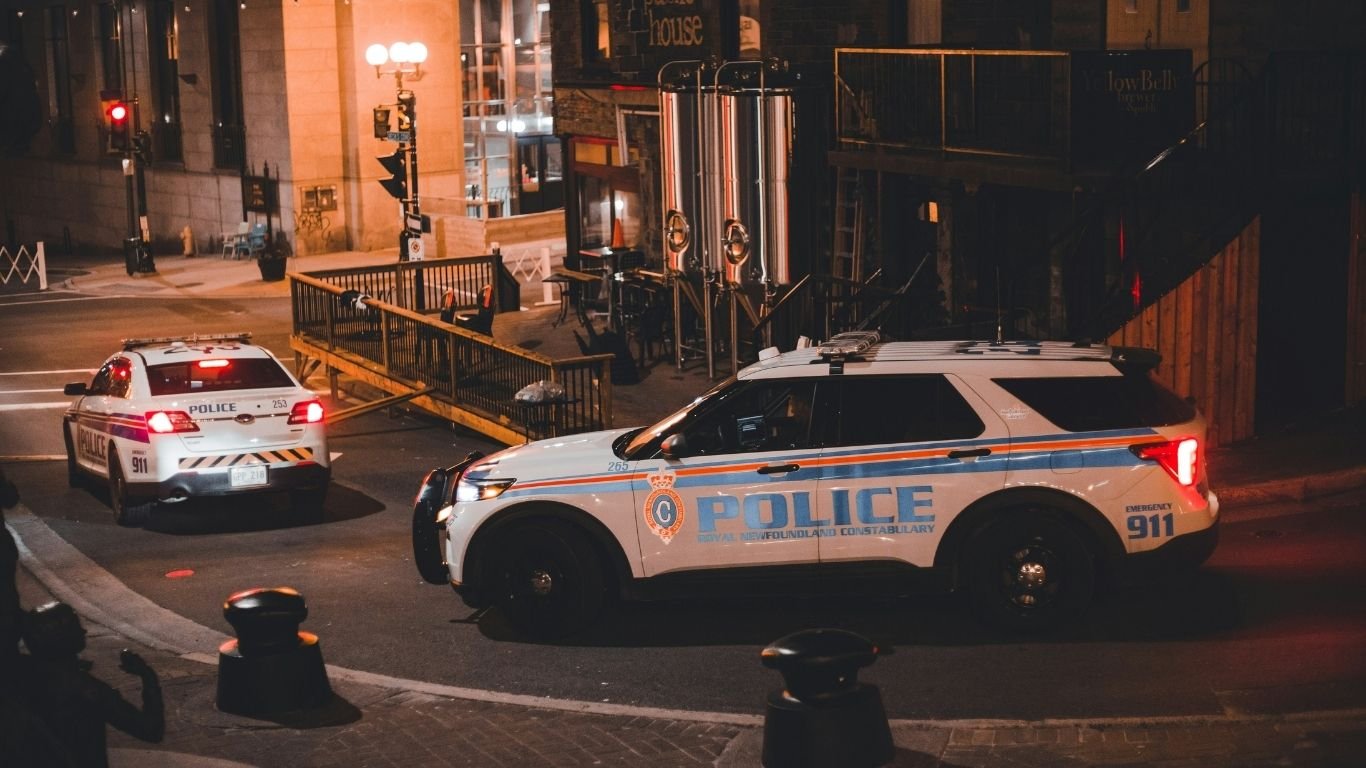Introduction to the Situation at the Kentucky Walmart
In recent weeks, the Kentucky Walmart has become a focal point of community discussion. A noticeable increase in police presence at this retail giant is stirring up mixed reactions among shoppers and employees alike. What started as an effort to enhance safety has quickly turned into a topic of controversy, raising questions about security and customer comfort. As patrons navigate their shopping experience with officers visible throughout the store, it begs the question: is this added layer of protection reassuring or unsettling? Let’s dive deeper into this situation that’s capturing public attention across Kentucky.
The Controversy Over Police Presence in Retail Stores
The presence of police in retail stores has sparked heated debates across communities. Some argue it enhances safety, deterring crime and ensuring a secure shopping experience.
Conversely, many see this practice as a form of intimidation. The sight of law enforcement can make customers feel unwelcome or even targeted. This creates an uncomfortable atmosphere that detracts from the overall shopping experience.
Critics point out that increased police visibility does not always translate to improved safety. They question whether such measures effectively address underlying issues like theft or community distrust.
Supporters believe having officers on-site fosters a sense of security for both employees and shoppers alike. They often cite examples where quick responses have prevented potential incidents before they escalate.
This dilemma raises essential questions about how we balance public safety with personal comfort in our everyday environments. Each store’s approach reflects broader societal values and attitudes towards authority and community relations.
Arguments for and Against Police Presence in Retail Stores
Supporters of police presence in retail stores argue that it enhances safety. They believe that visible law enforcement can deter crime and reduce theft. Shoppers often feel more secure when they know officers are around.
On the flip side, critics raise concerns about intimidation. Some customers may feel uncomfortable or unwelcome with uniformed officers nearby. This tension can create an uninviting atmosphere for genuine shoppers.
Additionally, there’s the question of resource allocation. Opponents point out that funding spent on police could be better used to improve security technology or staff training.
The balance between safety and comfort is delicate; both sides present valid points worth considering as communities navigate this complex issue.
Impact on Customers and Employees of Walmart
The heightened police presence at the Kentucky Walmart has sparked varied reactions among customers and employees alike. For some shoppers, the presence of law enforcement brings a sense of security. They feel reassured knowing there are measures in place to handle potential issues.
However, not everyone shares this sentiment. Many customers express discomfort with uniformed officers patrolling the aisles. It can create an atmosphere that feels more like a high-security environment than a welcoming retail space.
Employees also find themselves caught in the middle. While some appreciate having support during tense situations, others worry about how it affects customer interactions. A focus on security might overshadow their core mission: providing good service and creating a pleasant shopping experience.
This dynamic influences workplace morale as well, reflecting broader tensions between safety protocols and community trust within retail environments.
Responses from Walmart and Local Law Enforcement
Walmart has acknowledged the concerns surrounding its police presence in Kentucky stores. The company emphasizes that safety is a top priority for both customers and employees. They claim this approach is meant to deter crime and enhance security.
Local law enforcement has also weighed in on the debate. Police officials argue that their visibility can foster a sense of safety within the community. They view the partnership with retailers like Walmart as beneficial, particularly in high-crime areas.
However, there are mixed feelings among officers regarding over-policing retail spaces. Some believe it may lead to unnecessary tensions between shoppers and law enforcement. Both parties continue to navigate this delicate balance, striving for an environment where everyone feels secure and welcome while shopping.
Similar Incidents in Other Retail Stores
Across the country, similar situations have unfolded in various retail environments. Stores like Target and Kroger have seen increased police presence due to rising theft and safety concerns.
Some retailers react by hiring off-duty officers or increasing security staffing. This approach aims to deter crime while ensuring customer safety. However, it often raises eyebrows among shoppers.
In other cases, protests erupt over perceived heavy-handed policing in stores. The discussions highlight a significant divide between community trust and the need for security measures.
Additionally, incidents at places like CVS show that public perception greatly influences how these strategies are received. Customers want reassurance but also seek a shopping experience free from intimidation.
As these narratives evolve, industry leaders watch closely to find effective solutions that prioritize both safety and comfort within their spaces. Each store grapples with its unique challenges while navigating this complex landscape of public sentiment and operational needs.
Conclusion: Balancing Security and Customer Comfort in Retail Environments
As the Kentucky Walmart police presence continues to spark discussions, it’s crucial to consider the balance between security measures and customer comfort. Retail environments are meant to be safe havens for shoppers, but the visibility of law enforcement can create mixed feelings.
On one hand, many customers appreciate knowing that there is a proactive response to potential issues. It can lead to a sense of safety while shopping, especially in areas where crime rates may be higher. Employees also benefit from having support on-site when dealing with difficult situations.
On the other hand, an increased police presence might make some customers feel uneasy or unwelcome. This perception can deter individuals from visiting stores altogether. The challenge lies in ensuring that everyone feels secure without compromising their overall shopping experience.
Finding this balance requires ongoing dialogue between retailers, law enforcement agencies, and communities they serve. The goal should always be to foster an environment where people feel both protected and comfortable as they go about their daily lives.

